Okarito Kiwi
- December 18, 2023
- 0 comment
The Okarito Kiwi (Apteryx rowi) Okarito kiwi is an important part of the New Zealand ecosystem and is protected by law. The Okarito kiwi is one of the rarest and most endangered species of kiwi, and it is found in the Okarito forest on the West Coast of New Zealand’s South Island.
Physical Appearance
The Okarito kiwi’s physical characteristics are well-suited to its terrestrial and forested habitat. Its unique features, including the slightly longer bill, contribute to its specialized foraging behavior.

Okarito Kiwi
- Lifespan: 15 to 20 years
- Habitat: Lowland Podocarp and Hardwood Forests
- Diet: Omnivores, Insects, Worms, and Spiders.
- Size: 40 to 45 cm
- Weight: 1.2 to 1.8 kilograms
- Wingspan: measuring only a few centimeters.
- Conservation Status: Critically Endangered
- Population Trend: Stabilize Population
The kiwi is a unique and iconic bird native to New Zealand. It belongs to the family Apterygidae and is flightless, with small, vestigial wings and a long, slender bill. Kiwis are known for their distinctive appearance, which includes a shaggy, brownish-gray plumage and a round body.
Species Type of Okarito Kiwi
The Okarito kiwi is a flightless bird with a long, curved beak and strong legs. It lives in dense forests and swamps, where it feeds on insects, worms, and other invertebrates. The Okarito kiwi is nocturnal and is very shy, making it difficult to observe in the wild.
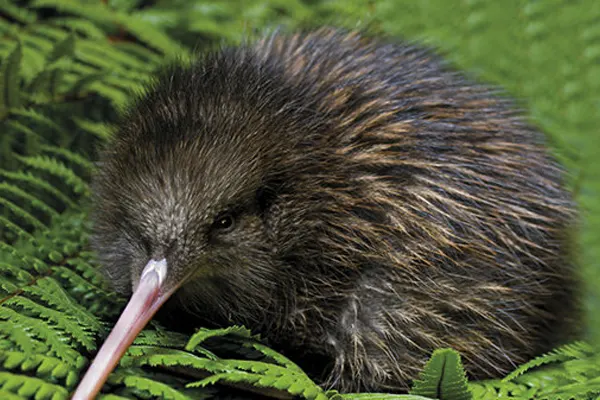
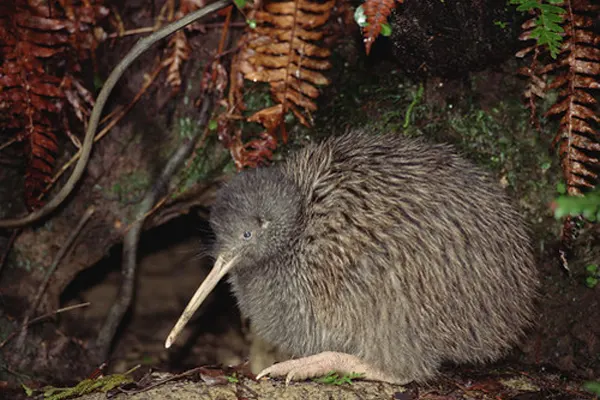
- Kingdom: Animalia
- Phylum: Chordata
- Subphylum: Vertebrata
- Class: Aves
- Order: Apterygiformes
- Family: Apterygidae
- Genus: Apteryx
- Species: Apteryx rowi
The Okarito kiwi is distinguished from other kiwi species by specific characteristics, and it is recognized as one of the rarest and most endangered types of kiwi.
Feather Coloration of Okarito Kiwi
The feather coloration of the Okarito kiwi, or rowi, is typically brown or grayish-brown. Like other kiwi species, the plumage of the Okarito kiwi is characterized by a shaggy and coarse texture. The coloration of their feathers helps provide camouflage in their natural forest habitat, blending in with the leaf litter and understory vegetation.

Male
- Okarito Kiwi has a distinctive reddish-brown feather coloration with fine, dark brown streaks. The feathers are long and shaggy, giving the bird a soft, fur-like appearance. The underside of the male Okarito Kiwi is typically a paler shade of brown, often with a subtle grayish tinge.
Female
- Slightly darker: The reddish-brown base of the female’s plumage might appear slightly darker than that of the male.
- More prominent streaks: The dark brown streaks are typically more pronounced and extensive in females, potentially providing additional camouflage benefits.
- Underside markings: Some females may exhibit faint barring or speckling on the underside, a feature not typically seen in males.

This cryptic coloration aids the Okarito kiwi in remaining hidden from potential predators and allows it to navigate its environment effectively, especially during its nocturnal activities. The specific shades of brown or gray may vary among individual birds, but the overall coloration is adapted to the forested surroundings where the Okarito kiwi resides.
Flight Characteristics of Okarito Kiwi
The Okarito Kiwi, like all kiwi species, is entirely flightless. Their wings are vestigial, meaning they are underdeveloped and non-functional for flight. While their wings have some remnant feathers, they lack the necessary size, strength, and musculature to generate enough lift for airborne movement.
- Vestigial wings: The wings are only about 3-4 inches (7-10 cm) in length, far too small to generate lift for their body weight.
- Reduced wing musculature: The muscles required for flight are significantly underdeveloped, lacking the strength and power necessary for flapping.
- Keel absence: Kiwis lack the prominent keel on their breastbone, which typically anchors the powerful flight muscles in flying birds.
- Heavy body: Their robust build, weighing up to 9 pounds (4.1 kg), further hinders their ability to achieve lift.

Despite being flightless, the Okarito Kiwi has adapted remarkably well to its environment. Their strong legs allow them to run swiftly and navigate through the dense forest understory. Their keen sense of smell and touch helps them locate food sources and avoid potential dangers. This adaptation highlights the remarkable diversity and resilience of life on Earth, where species thrive through unique specializations rather than adhering to a single “blueprint” for survival.
Migration Patterns of Okarito Kiwi
The Okarito kiwi tends to have a relatively small home range within its native habitat, primarily the Okarito forest on the West Coast of New Zealand’s South Island. While they may move around within their home range for various reasons, such as foraging and breeding, they do not engage in long-distance migrations like some bird species.

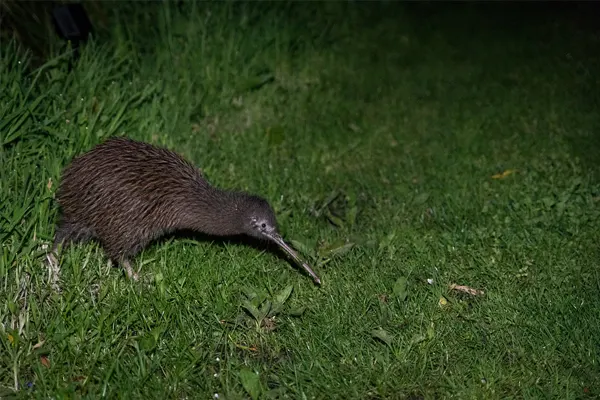
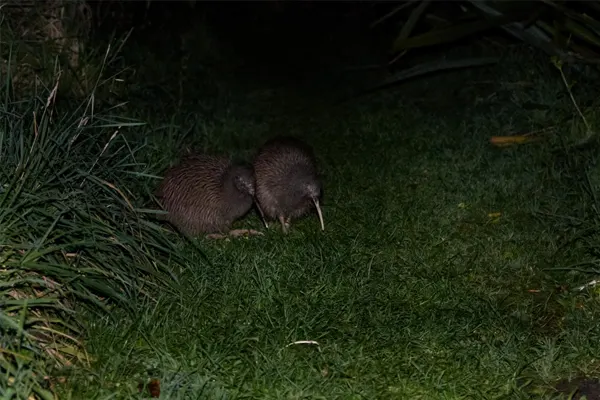
Kiwi species, including the Okarito kiwi, face threats primarily within their established habitats, such as introduced predators and habitat degradation. Conservation efforts are focused on protecting and restoring these habitats, as well as implementing measures to control predators, to ensure the survival of the Okarito kiwi within its native range.
Habitat & Distribution of Okarito Kiwi
The future of the Okarito Kiwi depends heavily on continued conservation efforts and habitat protection. By addressing the threats and promoting a sustainable future for this unique species, New Zealand can ensure the survival of the Okarito Kiwi and its ecological contribution for generations to come.
- Dense temperate rainforests: These forests are characterized by tall trees, a thick understory, and a moist climate. The Okarito Kiwi thrives in this environment, which provides them with ample food sources, shelter, and protection from predators.
- Swamps: The Okarito Kiwi also utilizes swampy areas within or adjacent to the rainforests. These areas offer access to diverse invertebrates found in moist soil and decaying vegetation.
- Specific plant communities: Certain plants, like the kāmahi tree and mamaku fern, provide preferred nesting sites and foraging grounds for the Okarito Kiwi. These plants contribute to the overall habitat structure and resources crucial for their survival.
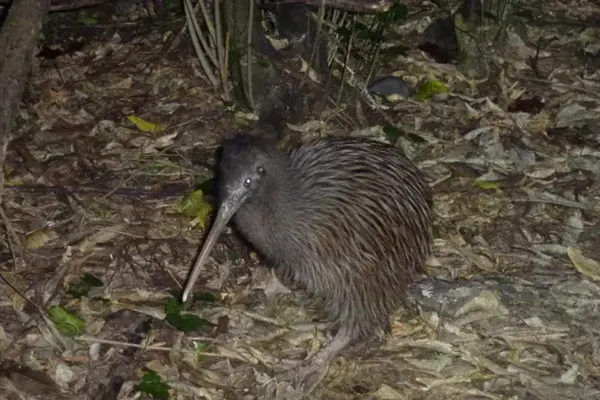
Distribution
- Highly restricted: The Okarito Kiwi exhibits a highly restricted distribution, limited to a small area of the West Coast of New Zealand’s South Island.
- Ōkārito forest: The primary habitat lies within the Ōkārito forest, located near the Ōkārito River. This forest provides a crucial sanctuary for the remaining Okarito Kiwi population.
- Hokitika River catchment: A small population also exists in the Hokitika River catchment, further south of the Ōkārito forest.
- Predator-free islands: Conservation efforts have successfully translocated some Okarito Kiwis to predator-free islands, offering additional protection and potential for further population growth.
Behavioral Traits of Okarito Kiwi
Okarito Kiwi are nocturnal animals, which means they are most active at night. They spend most of their time foraging for food, which they do by using their long, sensitive beaks to probe the leaf litter for invertebrates, such as earthworms, insects, and snails. Okarito Kiwi also eat some fruits and berries.
- Communication: Okarito Kiwi communicate with each other using a variety of vocalizations, including grunts, squeals, and whistles.
- Sleeping: Okarito Kiwi sleep in burrows or under logs and rocks.
- Predators: Okarito Kiwi are preyed upon by introduced predators, such as stoats, cats, and dogs.
- Threats: Okarito Kiwi are also threatened by habitat loss and fragmentation, climate change, and disease.
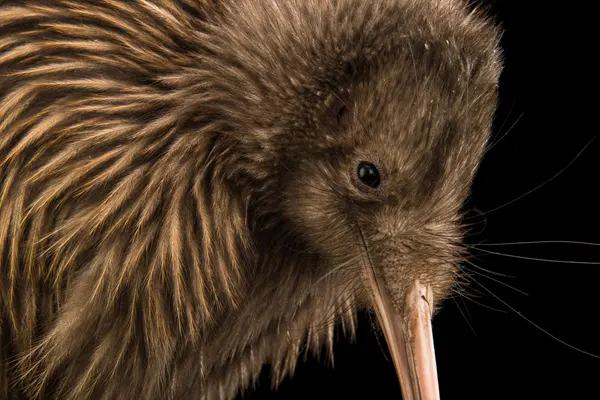
Okarito Kiwi are territorial animals, and they defend their territories from other kiwis. They mark their territories with scent glands located on their faces. Okarito Kiwi are also excellent swimmers, and they often use this ability to escape predators.
Role in Ecosystem of Okarito Kiwi
The Okarito Kiwi plays a vital role in maintaining the balance and diversity of its ecosystem. Through its seed dispersal, invertebrate predation, soil aeration, and cultural significance, this unique bird species contributes significantly to the well-being of the natural world. Protecting the Okarito Kiwi is crucial, not just for the survival of the species itself, but also for the health and resilience of the entire ecosystem it calls home.
- Seed dispersal: Okarito Kiwi consume various fruits and berries, swallowing seeds whole. As they move through their territory, they disperse these seeds in their droppings, promoting the regeneration and diversification of plant life across the forest floor. This contributes to maintaining the overall health and biodiversity of the ecosystem.
- Control of invertebrates: By actively foraging for invertebrates like earthworms, insects, and snails, Okarito Kiwi help to regulate their populations. This keeps these populations in check, preventing any single species from becoming dominant and disrupting the ecosystem’s balance.
- Soil aeration and nutrient cycling: Okarito Kiwi actively dig and probe the soil with their beaks as they search for food. This digging activity helps to aerate the soil, improving drainage and promoting root growth. Additionally, their droppings act as natural fertilizer, enriching the soil with nutrients essential for plant growth.
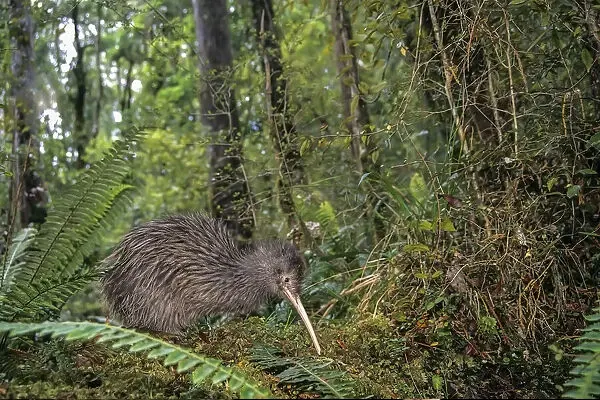
- Indicator species: The presence and health of Okarito Kiwi populations can serve as an indicator of the overall health of the ecosystem. As they are sensitive to environmental changes, any decline in their population or changes in their behavior can provide valuable insights into potential environmental problems, prompting action for conservation and restoration.
- Cultural significance: Okarito Kiwi hold deep cultural significance for the indigenous Maori people of New Zealand. They are considered taonga (treasures) and are often featured in myths, legends, and traditional art. Protecting the Okarito Kiwi not only ensures the health of the ecosystem but also preserves valuable cultural heritage.
Conservation efforts aimed at protecting the Okarito kiwi are not only crucial for the survival of this specific species but also for maintaining the ecological balance and integrity of the New Zealand forests where it resides.
Dietary Habits of Okarito Kiwi
The Okarito kiwi’s dietary habits are specialized for its forested habitat, where it plays a role in controlling invertebrate populations and contributes to the overall ecology of its ecosystem. Conservation efforts for this species often take into account the preservation of its habitat and the availability of suitable food sources.
- Invertebrates
- The primary component of the Okarito kiwi’s diet consists of invertebrates such as insects, worms, and spiders.
- The kiwi’s long, slender beak is well-adapted for probing into the leaf litter and soil, allowing it to search for and capture these invertebrates.
- Feeding Behavior
- The Okarito kiwi is a ground-dwelling bird that forages on the forest floor, using its keen sense of smell to locate prey.
- It employs a probing technique with its beak, thrusting it into the ground and leaf litter to extract invertebrates hidden beneath the surface.
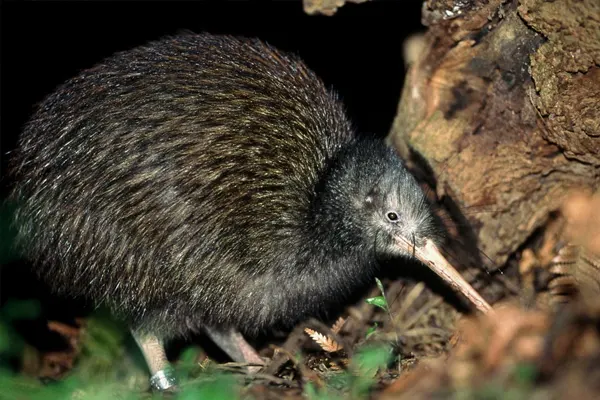

- Nocturnal Foraging
- The Okarito kiwi is primarily nocturnal, being most active during the night. This behavior is advantageous for locating and capturing invertebrates, which are also often more active during the darker hours.
- Sensory Adaptations
- The beak of the Okarito kiwi is equipped with sensory pits at the tip, enhancing its ability to detect prey through touch.
- This adaptation is particularly useful for locating invertebrates hidden in the soil or leaf litter.
- Occasional Plant Material
- While the majority of the Okarito kiwi’s diet consists of invertebrates, it may occasionally consume plant material such as fruits and berries.
- Consumption of plant material can vary depending on seasonal availability and individual dietary preferences.
- Water Requirements
- Kiwis, including the Okarito kiwi, obtain much of their water needs from the invertebrates they consume. They have been observed to drink water when available, but they are generally capable of obtaining sufficient moisture from their diet.
The Okarito Kiwi’s diet is well-adapted to its nocturnal lifestyle and forest habitat. Their keen senses of smell and touch help them locate food in the darkness, and their long, sensitive bills are perfect for probing the soil and extracting prey. Their ability to eat a variety of food sources helps them to survive in a changing environment.
Interesting Facts of Okarito Kiwi
These facts highlight the unique features and conservation challenges of the Okarito kiwi, contributing to the broader understanding of New Zealand’s biodiversity and the importance of preserving endangered species.
- Tiny Population: With only around 600 individuals remaining in the wild, the Okarito Kiwi is the rarest kiwi species and one of the rarest birds in the world.
- Nocturnal Treasure: These elusive birds are mainly active at night, using their keen senses of smell and touch to navigate their forest habitat and hunt for food.
- Long-Lived Partners: Okarito Kiwi are monogamous and form strong pair bonds that can last for life. They work together to raise their young, with the male taking on the role of incubating the egg and caring for the chick for the first few weeks of its life.
- Champion Diggers: Their long, powerful legs and sharp claws are perfectly adapted for digging. They use this skill to search for earthworms, their favorite food, in the forest floor.
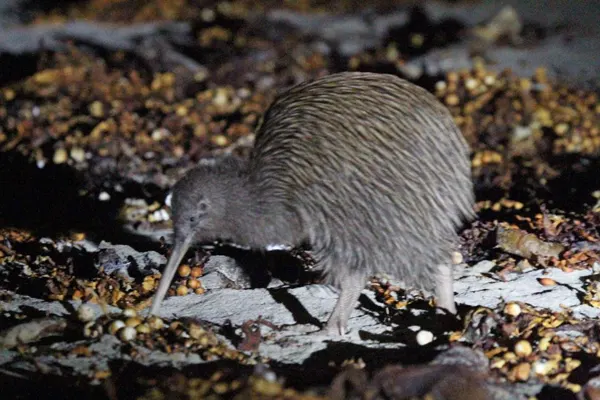
- Excellent Swimmers: Despite being flightless, Okarito Kiwi are surprisingly good swimmers. They use this ability to escape predators and cross rivers and streams.
- Sensitive Sniffers: Their nostrils are located at the tip of their long beaks, making them incredibly sensitive to smells. This helps them locate food hidden deep within the soil and undergrowth.
- Unsung Gardeners: Okarito Kiwi play an important role in the ecosystem by dispersing seeds through their droppings. This helps plants to spread and grow, contributing to the overall health of the forest.
Nesting Habits of Okarito Kiwi
The nesting habits of the Okarito kiwi is crucial for conservationists working to protect and preserve this critically endangered species. The unique nesting behaviors, especially the shared incubation, contribute to the overall ecological strategies that have evolved in response to the challenges of the New Zealand forest ecosystem.
- Burrow Nesting:
- The Okarito kiwi is known for nesting in burrows, which are typically located in the forested areas of its habitat.
- These burrows serve as a shelter for incubating eggs and protecting the chicks.
- Nesting Material:
- The female Okarito kiwi usually selects a suitable site for a burrow and constructs a nest within it.
- The nest is lined with various materials, including leaves, twigs, and other vegetation, providing a comfortable and insulated environment for the egg.
- Extended Incubation Period:
- The incubation period for Okarito kiwi eggs is relatively long, lasting around 80 days.
- The male is primarily responsible for incubating the egg, showcasing a unique cooperative breeding behavior within the species.
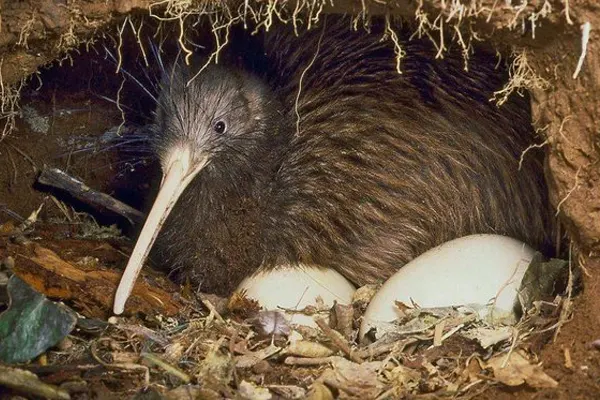
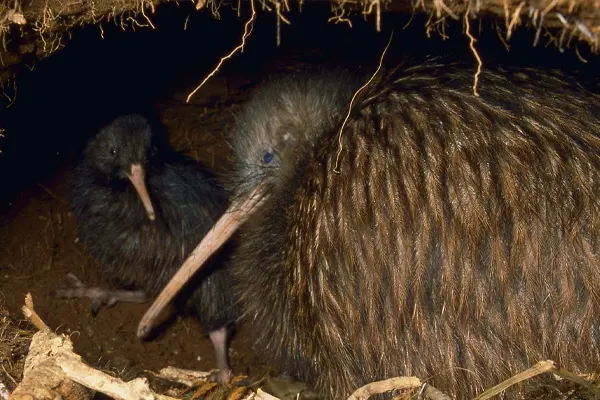
- Shared Incubation:
- Both male and female Okarito kiwis are involved in the incubation process, with the male taking the lead.
- This shared incubation strategy is a distinctive feature among kiwi species and contributes to the species’ survival.
- Camouflaged Nests:
- The female constructs the nest in a way that helps it blend into the surrounding environment.
- Camouflaging the nest provides additional protection against potential predators, as it reduces the visibility of the nest in the forest undergrowth.
- Territorial Behavior:
- During the breeding season, Okarito kiwis may establish territories, and nesting sites are selected within these territories.
- Territorial behavior helps in minimizing competition for resources and maintaining suitable conditions for nesting.
- Chick Rearing:
- After hatching, the chick remains in the burrow for some time before venturing out.
- The parents, particularly the male, continue to play a role in caring for and protecting the chick during its early stages of development.
Calls & Vocalizations of Okarito Kiwi
The calls and vocalizations of the Okarito Kiwi play an important role in maintaining the balance of the ecosystem. By using their calls to communicate and defend their territories, they help to regulate populations and prevent overgrazing of food resources. Additionally, their alarm calls can alert other animals in the area of potential danger, allowing them to take steps to protect themselves.
- Male call: The male Okarito Kiwi is known for its distinctive high-pitched whistle, repeated multiple times. This call is used to attract mates and defend their territory.
- Female call: The female Okarito Kiwi has a deeper, throatier call, often described as a guttural cry. This call is used to respond to the male’s call, communicate with her chicks, and defend her territory.
- Duetting: Okarito Kiwis are known to duet, where both the male and female vocalize together. This behavior is believed to strengthen their pair bond and reinforce territory boundaries.
- Contact calls: Both male and female Okarito Kiwis use softer, quieter calls to communicate with their chicks and other kiwis in their vicinity.
- Alarm calls: When threatened, Okarito Kiwis emit a loud, piercing screech to alert other kiwis in the area of potential danger.
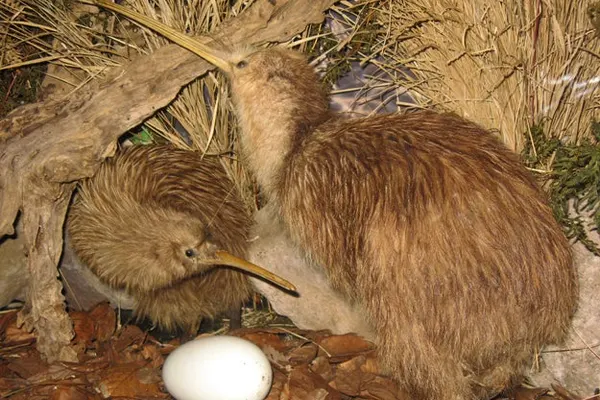
Function of Vocalizations
- Mate attraction: The male’s high-pitched whistle plays a crucial role in attracting mates. The female’s response call signifies her interest and willingness to breed.
- Territory defense: Both male and female Okarito Kiwis use vocalizations to mark and defend their territories. Their calls act as a warning to other kiwis to avoid entering their territory.
- Communication with young: Okarito Kiwi parents use soft vocalizations to communicate with their chicks and guide them to food and safety.
- Group cohesion: Duetting and other vocalizations help to maintain communication and strengthen pair bonds between Okarito Kiwis.
- Predator avoidance: Alarm calls alert other kiwis in the area of potential danger, allowing them to take evasive action.
The calls and vocalizations of the Okarito Kiwi is important for conservation efforts. By monitoring their vocal activity, researchers can track changes in population size and distribution. Additionally, understanding their communication patterns can help to develop more effective conservation strategies.
Conservation Status of Okarito Kiwi
The Okarito Kiwi is a threatened species, but their population is slowly increasing due to intensive conservation efforts. Continued dedication to predator control, habitat protection, captive breeding, and public awareness is essential to ensure the long-term survival of this remarkable bird.
- Habitat Loss: Deforestation and habitat degradation due to human activities have significantly impacted the Okarito kiwi’s natural habitat. The loss of suitable forested areas reduces the available space and resources for the kiwi population.
- Introduced Predators: The introduction of non-native predators, such as stoats, rats, and ferrets, poses a severe threat to the Okarito kiwi. These predators prey on kiwi eggs, chicks, and adults, contributing to population decline.
- Genetic Isolation: The Okarito kiwi population is relatively small and isolated, leading to concerns about genetic diversity. Limited genetic diversity can increase the susceptibility of the population to diseases and reduce its ability to adapt to environmental changes.
- Low Reproductive Rate: Kiwis, including the Okarito kiwi, have a slow reproductive rate. The extended incubation period and the vulnerability of eggs and chicks contribute to challenges in population recovery.
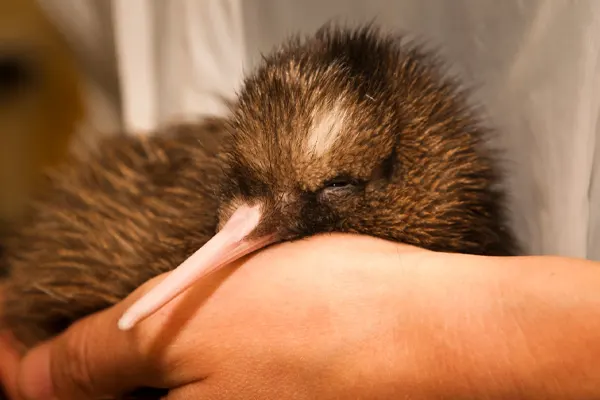
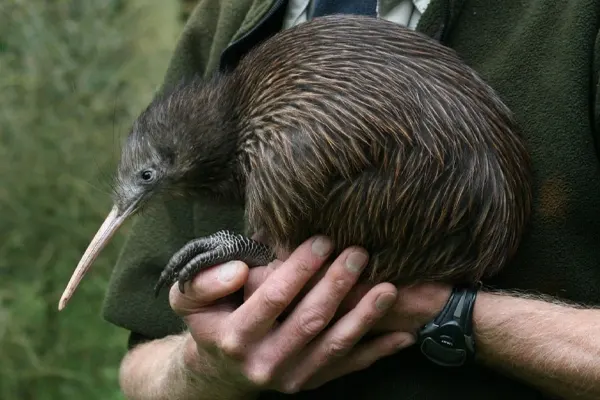
- Habitat Protection: Initiatives focus on preserving and restoring the natural habitat of the Okarito kiwi, including efforts to reduce deforestation and habitat fragmentation.
- Predator Control: Intensive predator control programs aim to manage and eliminate introduced predators in kiwi habitats, reducing the threat to kiwi eggs and chicks.
- Captive Breeding: Captive breeding programs are in place to enhance genetic diversity and provide a safety net for the species. Chicks raised in captivity may be released into protected areas.
- Community Engagement: Involving local communities in conservation efforts and raising awareness about the importance of protecting the Okarito kiwi contribute to sustainable conservation practices.
The Okarito Kiwi inhabits a restricted range along the West Coast of the South Island. Their habitat has been significantly reduced due to deforestation, agricultural expansion, and urban development. This fragmented habitat makes it difficult for kiwis to find food and mates, and increases their vulnerability to predators.
Research and Ongoing Studies of Okarito Kiwi
The Okarito Kiwi, a critically endangered flightless bird, is the subject of ongoing research and investigations aimed at understanding their biology, threats, and conservation needs.
- Genetic Studies:
- Research on the genetic diversity of the Okarito kiwi population is crucial for understanding the species’ resilience to diseases and environmental changes.
- Genetic studies may inform conservation strategies, such as managing breeding programs to maintain or enhance genetic diversity.
- Ecology and Behavior:
- Studies on the ecology and behavior of the Okarito kiwi help researchers understand its habitat requirements, foraging behavior, nesting habits, and territorial dynamics.
- Monitoring behavioral patterns provides insights into the species’ adaptation to its environment and aids in developing effective conservation measures.
- Reproductive Biology:
- Research on the reproductive biology of the Okarito kiwi includes investigations into nesting habits, incubation behavior, and chick-rearing practices.
- Understanding the reproductive biology is essential for developing successful captive breeding programs and improving the chances of survival for eggs and chicks in the wild.
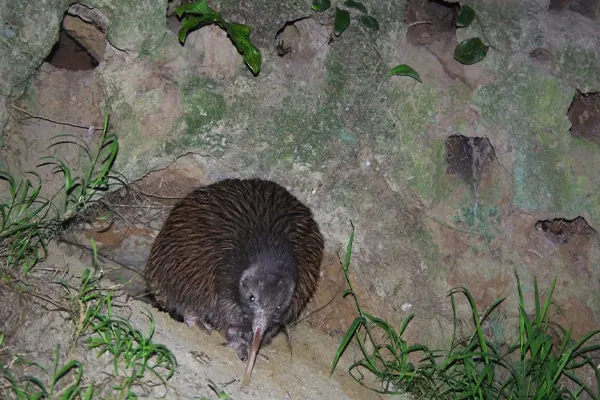
- Health and Disease Monitoring:
- Ongoing health assessments and disease monitoring programs are crucial for identifying potential threats to the Okarito kiwi population.
- Veterinary studies may help detect and address health issues that could impact individual birds or the entire population.
- Habitat Monitoring and Restoration:
- Research focuses on monitoring changes in the Okarito kiwi’s habitat and assessing the effectiveness of habitat restoration initiatives.
- Remote sensing technologies and on-the-ground surveys contribute to evaluating the impact of conservation measures on the overall ecosystem.
- Predator Control Strategies:
- Studies explore effective methods for controlling introduced predators that pose a threat to the Okarito kiwi.
- Research may involve testing and refining predator control techniques to minimize the impact on non-target species while maximizing protection for kiwi eggs, chicks, and adults.
The research and ongoing studies focused on the Okarito Kiwi are crucial for understanding their biology, threats, and conservation needs. By continuing to invest in research and developing effective conservation strategies, we can ensure the survival of this unique and endangered species for generations to come.
Educational and Ecotourism of Okarito Kiwi
The Okarito Kiwi, a rare and fascinating flightless bird, presents a unique opportunity for educational and ecotourism initiatives. These efforts can play a vital role in raising awareness about the species, promoting conservation efforts, and generating economic benefits for local communities.
- Balancing tourism with conservation: It is crucial to strike a balance between promoting ecotourism and ensuring the well-being of the Okarito Kiwi. This involves limiting visitor numbers, implementing responsible tourism practices, and minimizing disturbance to the birds.
- Protecting the environment: Ecotourism initiatives must prioritize responsible environmental practices, minimizing waste, pollution, and habitat degradation.
- Ensuring equitable benefits: Ensuring that local communities benefit from ecotourism opportunities is essential for fostering long-term support and commitment to conservation efforts.
- Educating tourists: Visitors should be educated about responsible wildlife viewing practices and the importance of minimizing their impact on the environment and the Okarito Kiwi.
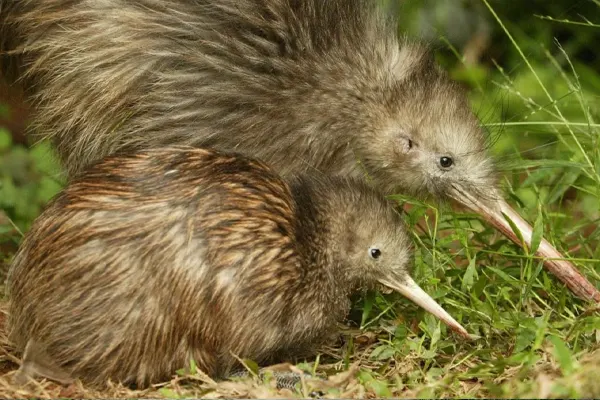
Educational and ecotourism initiatives can play a significant role in the conservation of the Okarito Kiwi by raising awareness, generating funding, and engaging local communities. By implementing responsible practices and prioritizing the well-being of the birds and their environment, these efforts can contribute to the long-term survival of this remarkable species.
Conclusion
The Okarito kiwi (Apteryx rowi) stands as a remarkable and critically endangered species, facing numerous challenges to its survival. With its distinct characteristics, unique nesting habits, and role in the ecosystem, the Okarito kiwi embodies the rich biodiversity of New Zealand’s natural heritage. As ongoing research sheds light on its genetics, behavior, and habitat dynamics, conservationists and researchers are working tirelessly to ensure its continued existence.
The Okarito kiwi’s story is one of resilience and adaptation, marked by its nocturnal lifestyle, vestigial wings, and cooperative breeding strategies. Despite its inherent vulnerabilities, the species plays a vital role in its ecosystem, contributing to seed dispersal, controlling invertebrate populations, and serving as an indicator of overall habitat health.
Conservation efforts, encompassing habitat protection, predator control, captive breeding, and community engagement, are instrumental in safeguarding the Okarito kiwi. Educational and ecotourism initiatives not only raise awareness about the species but also foster a sense of responsibility and appreciation for the delicate balance of nature.
As the Okarito kiwi navigates the challenges posed by habitat loss, introduced predators, and genetic isolation, collaborative endeavors involving researchers, local communities, and conservation organizations become paramount. The success of these efforts not only ensures the survival of a unique and emblematic species but also contributes to the broader conservation goals aimed at preserving New Zealand’s extraordinary biodiversity.


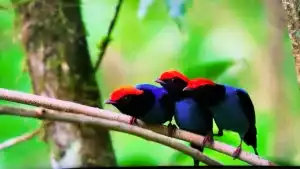


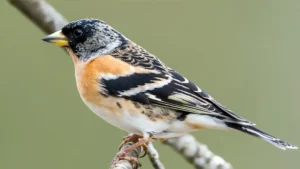


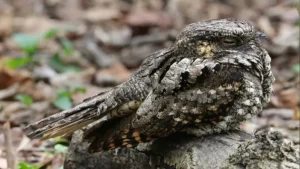
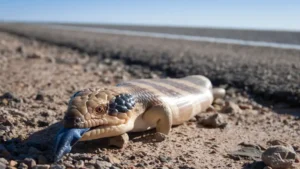
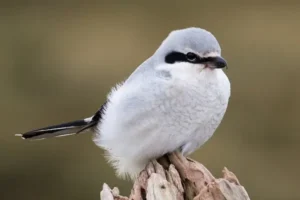


Leave your comment